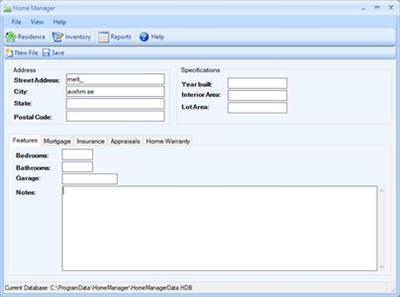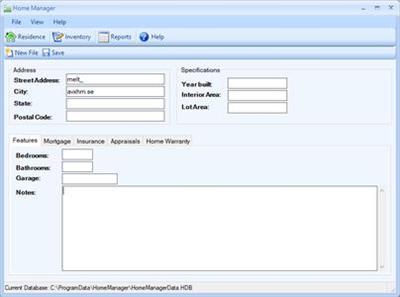Kaizen Implementation Guide For Continuous Improvement
"softddl.org"
17-06-2022, 23:12
-
Share on social networks:
-
Download for free: Kaizen
-

Published 6/2022
MP4 | Video: h264, 1280x720 | Audio: AAC, 44.1 KHz
Language: English | Size: 1.68 GB | Duration: 3h 9m

Published 6/2022
MP4 | Video: h264, 1280x720 | Audio: AAC, 44.1 KHz
Language: English | Size: 1.68 GB | Duration: 3h 9m
A step by step guide to implement Kaizen in your business to achieve Continuous Improvement and Operational Excellence
What you'll learn
Comprehensive understanding of Kaizen and its related concepts
Learn pre-requisites to implement Kaizen successfully in any kind of business
Step by step approach using various tools and methods to implement Kaizen
Techniques to influence people to work for continuous improvement
Structured approach for Kaizen Projects
Steps to follow through after Kaizen Implementation to ensure 100% prolonged results
Effective ways to Documentation, Reporting and Presentations for Kaizen Projects (A3 Reports)
Complete linkage explained of all concepts at the end so that concepts don't overlap
Requirements
Absolutely no prior knowledge about Kaizen or its methodologies is required for this course
Thinking out of the box approach and discipline will go a long way
The right attitude to work for Continuous Improvement
Description
Although Kaizen dates backs to centuries, it became a published terminology in Japanese works during the 20th century. It can be defined as change for good. Kaizen can be a simple change in the process which impacts the processes to become more efficient, reduces waste and increases productivity. It all goes back to Toyota manufacturing plant in the 1960's when the term kaizen was used in the structural improvement in manufacturing while establishing the Toyota Production System (known as TPS today). TPS later became an inspiration for Lean Manufacturing and expanded to almost every business out there. Since then, it has been seen as one of the most sought-after methodologies. Every business wants operate in a way which is lean, having minimum to no waste and maximum value. In order to achieve that, the cycle of continuous improvement should be used and this course aims to provide you exactly that. It teaches you how you can use the cycle of continuous improvement to make your business that has little to no waste and maximum value.Kaizen believes that the contribution to improvement is a never-ending process which is the source of many innovations and achievements. It is a search for a better way. Once a job has been designed, people forget about it. We are always on the outlook to improve products but not processes that make that product. Kaizen suggests otherwise, it focuses on the process improvement which ultimately helps the product in ways which you could not have even imagined. The cycle of Continuous Improvement or Kaizen allows employees to use his or her native abilities and creativity to the fullest to make their jobs easier and better every day.It focuses on how you can improve your business to effectively run all operations, make employees feel worthwhile and also make improvements to the processes along the way. Kaizen encourages everyone to make their work better for themselves.In this course you will find almost every technique in the book that will help you achieve exactly what you need to become a part of the continuous improvement cycle.
Overview
Section 1: What is Kaizen
Lecture 1 Defining Kaizen
Lecture 2 Kaizen Examples from daily life
Lecture 3 Concepts to understand
Lecture 4 Toyota Production System vs Lean Manufacturing
Lecture 5 Why is Kaizen important today?
Lecture 6 Lets bust some myths
Section 2: How to get started with Kaizen
Lecture 7 Kaizen and Standardization
Lecture 8 Why is Kaizen Continuous Improvement
Lecture 9 Discovering Potential: Kaizen vs Problem Solving
Lecture 10 How to influence people to practice Continuous Improvement
Section 3: Kaizen Implementation Techniques: Part 1
Lecture 11 Where to start implementing Kaizen
Lecture 12 Ways to identify Kaizen: 5S
Lecture 13 Ways to identify Kaizen: Gemba
Lecture 14 Ways to identify Kaizen: Genchi Genbutsu
Lecture 15 Ways to identify Kaizen: Muda
Lecture 16 7 Mudas and their identification
Lecture 17 Ways to identify Kaizen: QC Circles
Lecture 18 Ways to identify Kaizen: Creative Suggestion Systems
Lecture 19 Ten Areas to Investigate for Kaizen Opportunities
Lecture 20 Prioritization: Pareto Analysis (using EXCEL)
Section 4: Kaizen Implementation Techniques: Part 2
Lecture 21 Steps to Implement Kaizen: PDCA
Lecture 22 Plan: Step 1
Lecture 23 Root Cause Analysis: 5 Whys Analysis
Lecture 24 Root Cause Analysis: Cause & Effect Diagram
Lecture 25 Plan: Step 2 (Resources & Tasks identification)
Lecture 26 Plan: Step 3 (Scheduling using EXCEL)
Lecture 27 DO
Lecture 28 Check
Lecture 29 Act
Section 5: What to do after Implementation
Lecture 30 Monitoring Kaizen
Lecture 31 Reasons to Monitor
Lecture 32 Documentation
Lecture 33 A3 Reports
Section 6: Summary
Lecture 34 Complete overview
Anyone who is looking to improve their business by identifying and eliminating wastes,Students who are interested to work on continuous improvement projects,Managers looking to promote culture of continuous improvement at the workplace,Anyone who is just eager to learn new things
Homepage
https://www.udemy.com/course/kaizen-implementation-guide-for-continuous-improvement/
https://rapidgator.net/file/1a1acecf37ef617bc7dc1b8eb72f02e8/kdpso.Kaizen.Implementation.Guide.For.Continuous.Improvement.part1.rar.html
https://rapidgator.net/file/68de243fa2691308442d8e78b2e4842a/kdpso.Kaizen.Implementation.Guide.For.Continuous.Improvement.part2.rar.html

https://nitro.download/view/14D397BFF21C377/kdpso.Kaizen.Implementation.Guide.For.Continuous.Improvement.part1.rar
https://nitro.download/view/61914DEBC281775/kdpso.Kaizen.Implementation.Guide.For.Continuous.Improvement.part2.rar

https://uploadgig.com/file/download/84427BA99f468a11/kdpso.Kaizen.Implementation.Guide.For.Continuous.Improvement.part1.rar
https://uploadgig.com/file/download/eF007Cd1bd600ced/kdpso.Kaizen.Implementation.Guide.For.Continuous.Improvement.part2.rar
Links are Interchangeable - No Password - Single Extraction
The minimum comment length is 50 characters. comments are moderated





